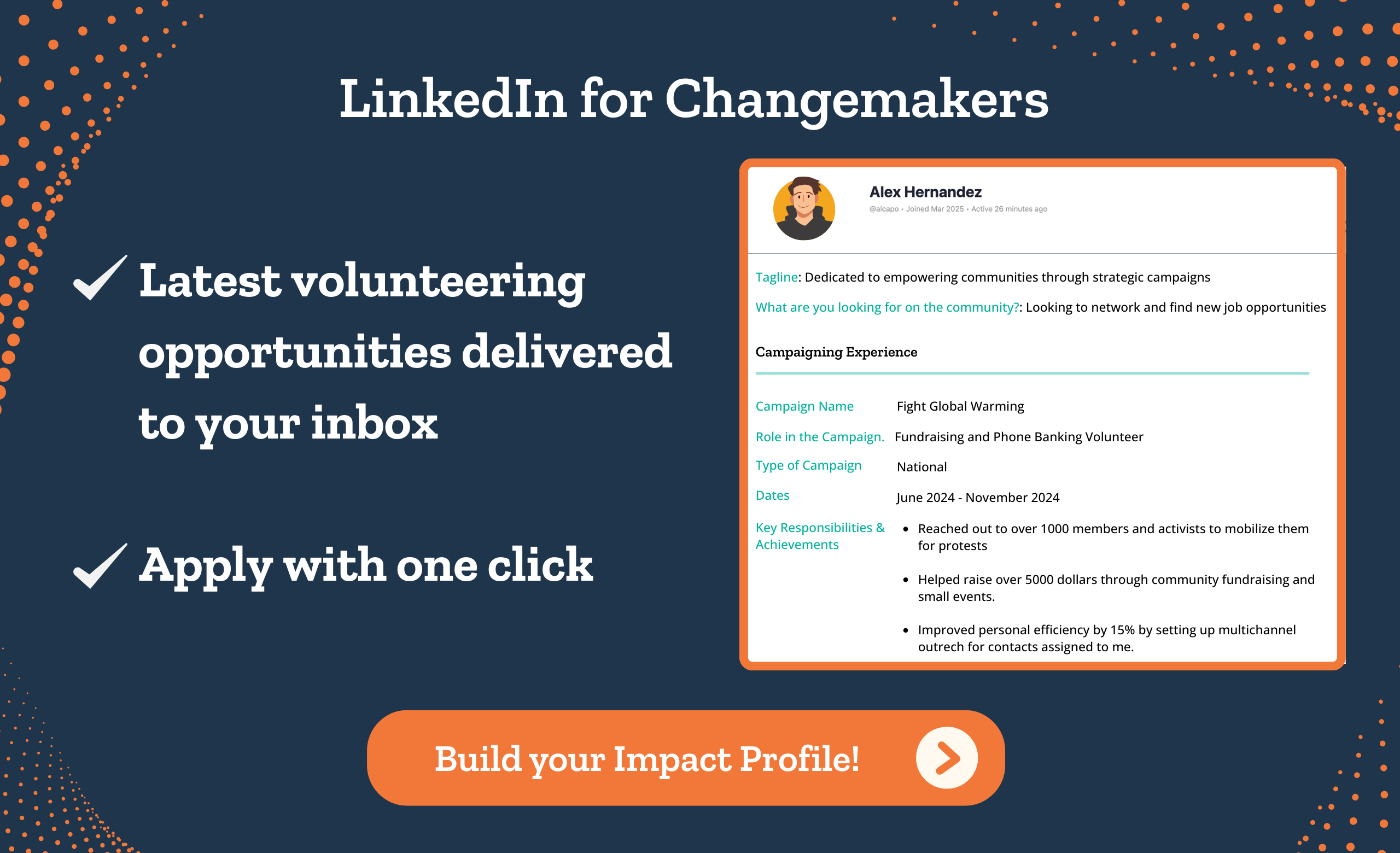Table of Contents
“People don’t care how much you know until they know how much you care.”
– John C. Maxwell.
Donor engagement is not just about donations. It’s about making donors feel valued and personally connected to your cause. You foster a deeper emotional bond with them when you show them that you care about their values and the impact of their contributions. This connection doesn’t just secure donations; it builds long-term loyalty and support, just like a cause that’s earned its place in the hearts of its customers.
Take, for example, Feeding America, one of the largest hunger-relief organizations in the U.S., which perfectly exemplifies the quote by John C Maxwell. Rather than just asking for money, they share real stories of hunger, showing donors the tangible impact of their contributions. In the feeding America report, they provided 6.6 billion meals and engaged over 2 million volunteers, emphasizing a direct link between donor support and the people they help.
The image below shows how this nonprofit shared stories of volunteers who stepped up to help out during the campaigns. This connects strongly with the donors for what they donate and to do more for the nonprofit. Now, this is what people care about!
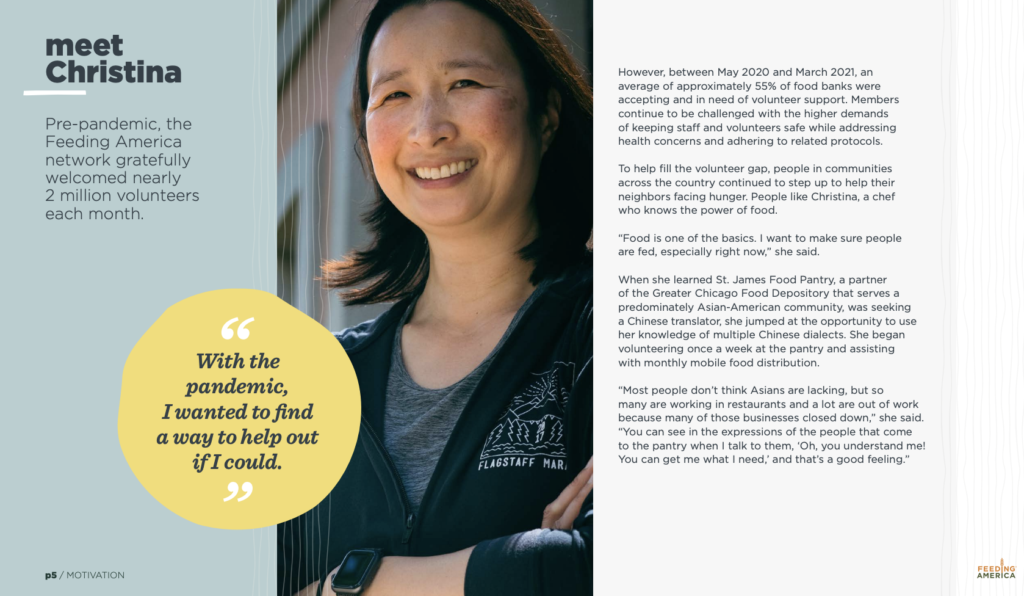
What is donor engagement?
Donor engagement refers to strategies and tactics to build meaningful relationships with donors and supporters. It helps keep them connected with the mission, ensuring donors feel informed, appreciated and part of something bigger. These engaged donors are not passive contributors. They support your work by attending events, sharing your cause, and volunteering.
A suitable donor engagement strategy is vital to retain these supporters over time because the cost of acquiring a new donor is often 10-20 times greater than retaining an existing one. Here, one can focus more on engaging and retaining existing donors instead of reaching out to new ones. This saves the organization both time and money.
To effectively engage donors, it’s essential to understand the flow of the donor engagement cycle. To foster lasting donor relationships, it’s crucial to begin with the donor engagement cycle, which outlines key touchpoints for meaningful interaction.
Donor engagement cycle
The donor engagement cycle is a structured approach that defines the continuous interaction between a nonprofit and its supporters. By understanding and nurturing this cycle, nonprofits can build lasting relationships that secure financial support and create a community of supporters. The stages in the cycle ensure that donors are continually involved, valued, and motivated to contribute in various ways. The stages are:
Phases of the donor engagement cycle:
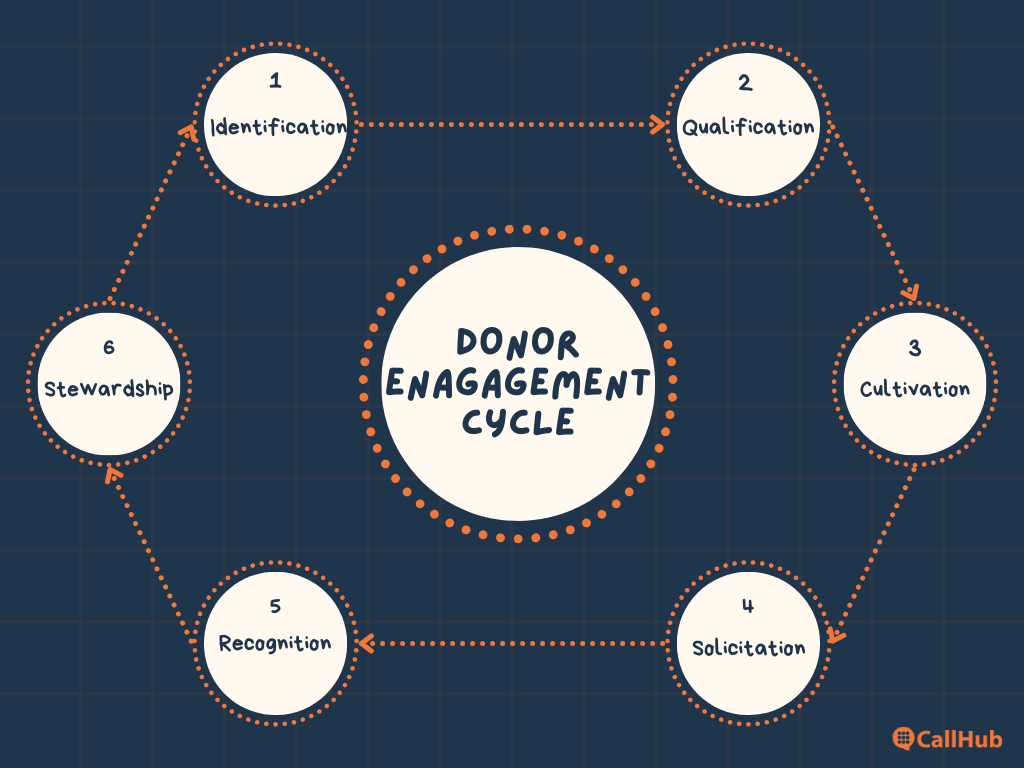
- Identification: It is the process of finding potential donors. These donors align with the mission and have the capacity to contribute.
- Qualification: This stage will assess donors. This includes their interest, ability to give, and alignment with the organization’s values.
- Cultivation: The cultivation stage nurtures relationships. Donors are kept informed and engaged, building trust and connection.
- Solicitation: Ask for donations or support with a compelling, well-timed request tailored to their interests.
- Recognition: This involves acknowledging donors for their contributions. This reinforces their importance and encourages continued support.
- Stewardship: Foster long-term loyalty by maintaining consistent communication and demonstrating how their donations make a difference.
Want to learn more about the donor engagement cycle and how you can incorporate it into your strategy? Here’s a detailed guide.
7 strategies to improve donor engagement
Donor engagement is critical to the long-term success of any nonprofit organization. Building strong, lasting relationships with donors can drive sustained support and increase advocacy. Here are seven effective strategies to help improve donor engagement and ensure your supporters remain connected and committed to your cause.
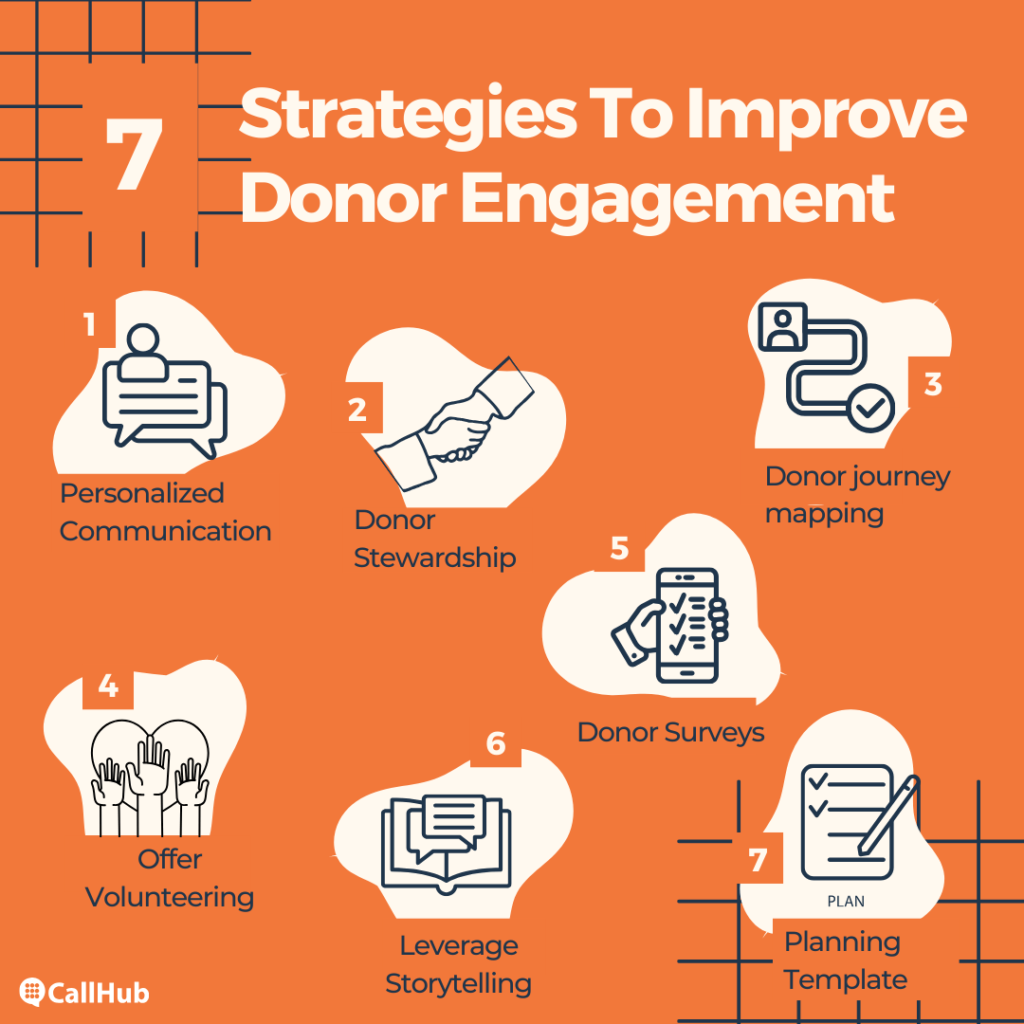
1. Personalized communication for donor engagement
Personalized communication boosts donor engagement by making supporters feel recognized and more connected to the cause. According to a study by Experian, personalized emails have an open rate of 29%, compared to just 18% for non-personalized emails. This is 1.6 times higher, demonstrating that tailored messages lead to better engagement and stronger donor relationships.
Use donor names and preferences:
We all want to be known and recognized for our contributions instead of being just another data point for a nonprofit. Addressing donors by name and tailoring communications to their interests provides individual recognition. This is a small move, yet a significant one, that adds value to donors’ contributions.

| Charity: Water Personalized Communication |
| Charity: Water is a nonprofit focused on providing clean drinking water. Their work targets people in developing countries. It takes personalization to the next level by sending individual thank-you videos to donors and emails or messages. They also send progress updates in a personalized manner, which mentions the campaign they supported and how much they donated, etc. This personal touch builds an emotional connection. It shows donors how their contributions make a real difference. Charity: Water has retained over 1 million donors worldwide and has raised $225 million. |
Leverage segmentation:
No two people think, feel, or resonate with causes the same way. Segmentation groups donors by their donation history, interests, or demographics to help you target your messaging and communications in ways that mean the most to each group of donors. List segmentation helps target different donor types more effectively. to ensure your messages are relevant and impactful for each donor group.
For example, you might segment donors into groups such as:
- Type of donors: Major donors, Monthly recurring donors, First-time contributors
- Age group: Gen-Z, Millennial, Gen-X, or Boomer contributors
- Initiatives they are interested in.
- Education level
- Engaged or lapsed donors.
For example, at CallHub, list segmentation helps nonprofits by allowing them to create highly targeted donor lists. You can customize messages in multiple ways, such as donation frequency, event participation, communication preferences, etc.
As per Campaign Monitor, segmented campaigns give you a 760% increase in revenue. List segmentation builds long-term loyalty by making donors feel understood and appreciated.
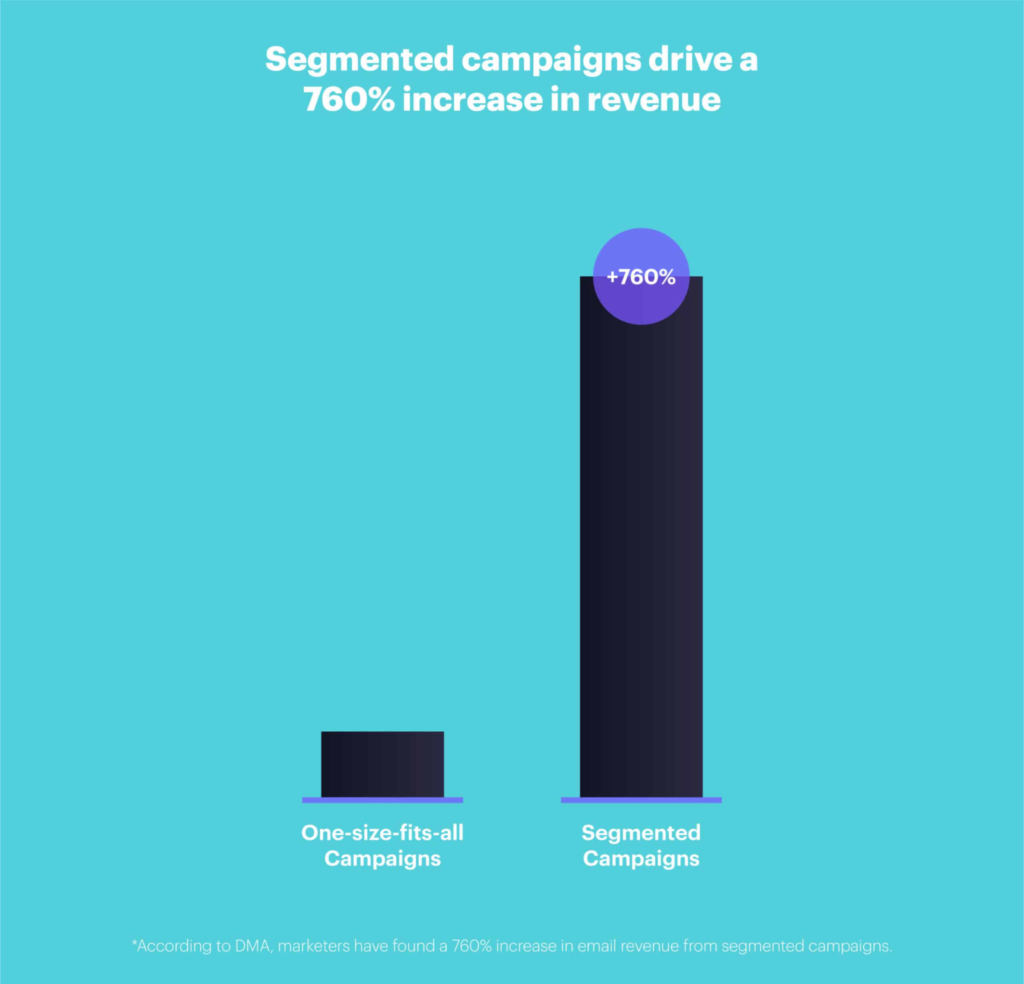
2. Donor stewardship programs
Donor stewardship refers to the practices and strategies used by nonprofits to build and maintain strong, long-term relationships with their donors. It involves showing appreciation, providing updates on the impact of their contributions, and engaging them in meaningful ways to ensure continued support and loyalty.
Do consistent follow-ups and give updates:
Regular updates about the impact of donor contributions helps build trust. Here are some methods you can use to build trust with donors:
- Personalized emails should acknowledge the donor’s contributions. Provide updates on the projects they’ve supported. This creates an emotional connection. It also shows genuine appreciation, a key part of a donor engagement strategy.
- A call from staff or board members can strengthen the donor relationship. A personal touch makes a big difference. It provides a chance for direct feedback. This fosters a deeper connection with the donor, encouraging long-term loyalty.
- Share real-time updates on social media platforms. This keeps donors engaged and informed about the organization’s impact.
Exclusive donor appreciation events:
Host special donor appreciation events to express gratitude, strengthen relationships, and deepen donor commitment. Some examples include:
- Recognition walls: Create a physical or virtual recognition wall to display donor names. This public acknowledgment makes donors feel valued and strengthens the donor stewardship process.
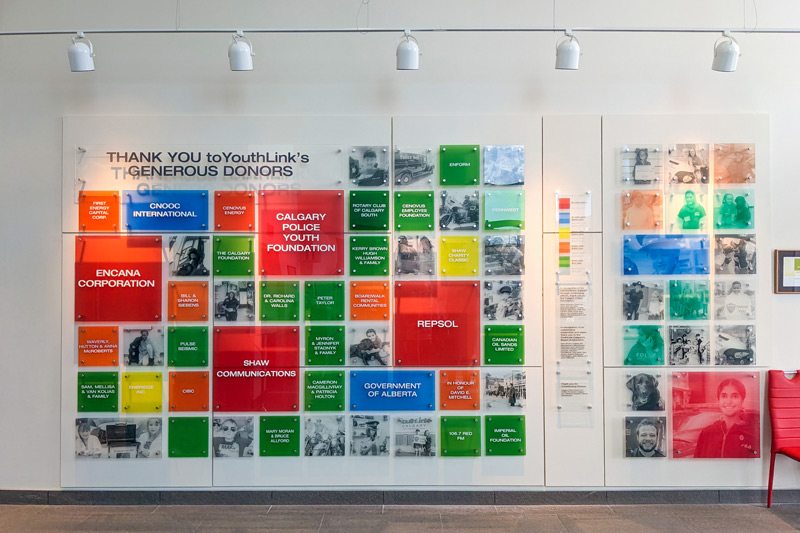
- Annual galas or award ceremonies: Host annual galas or award ceremonies to celebrate major donors. These events provide a platform for networking and community building.
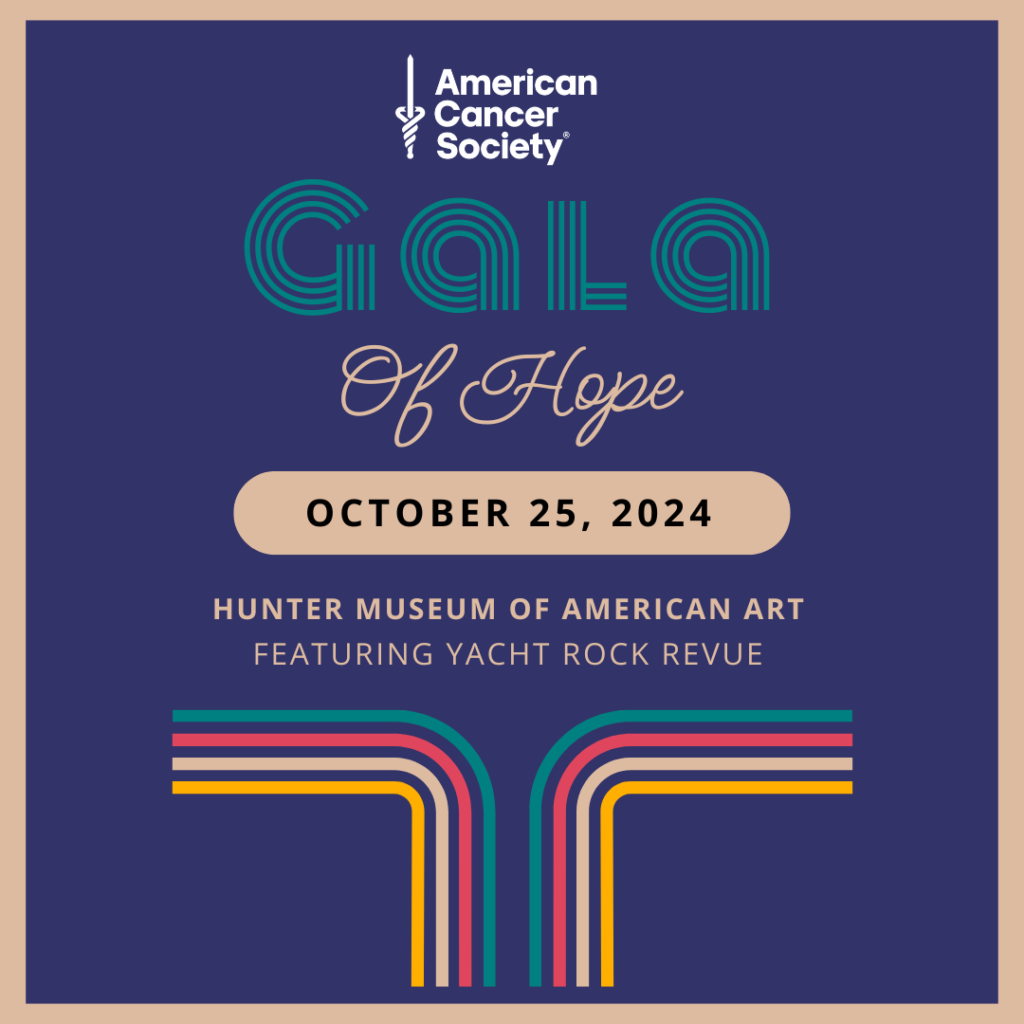
| Gala of Hope |
| Each year, the American Cancer Society hosts a fundraising gala. It attracts over 500 community leaders. This event honors major donors, survivors, and volunteers. During the event, they celebrate key donors with awards and special recognition. Donors can network and learn about the organization’s impact. They can also connect with others who share their passion for the cause The event allows attendees to network and learn about the organization’s impact. It also helps them connect with others who share their passion for the cause. The event has raised over $6.2 million in the fight against cancer. The upcoming “Gala of Hope” is happening on May 10th, 2025. |
3. Donor journey mapping for donor engagement
Donor journey mapping helps nonprofits understand and visualize the various stages a donor goes through, from their first interaction to becoming a long-term supporter. By identifying key touchpoints and needs at each stage, nonprofits can create more targeted, personalized experiences that enhance engagement and increase the likelihood of retention and increased giving.
Monitor donor touchpoints
Monitoring touchpoints allows you to tailor interactions to donor preferences. For instance:
- Donors who engage with event invites on social media can receive personalized follow-ups. They could also get exclusive event-related content.
- First-time donors visiting the “About Us” page can receive an introductory email. The email will share the organization’s mission and achievements.
- Emails subject lines that are personalized have 26% increased open rates, as per Campaign Monitor.
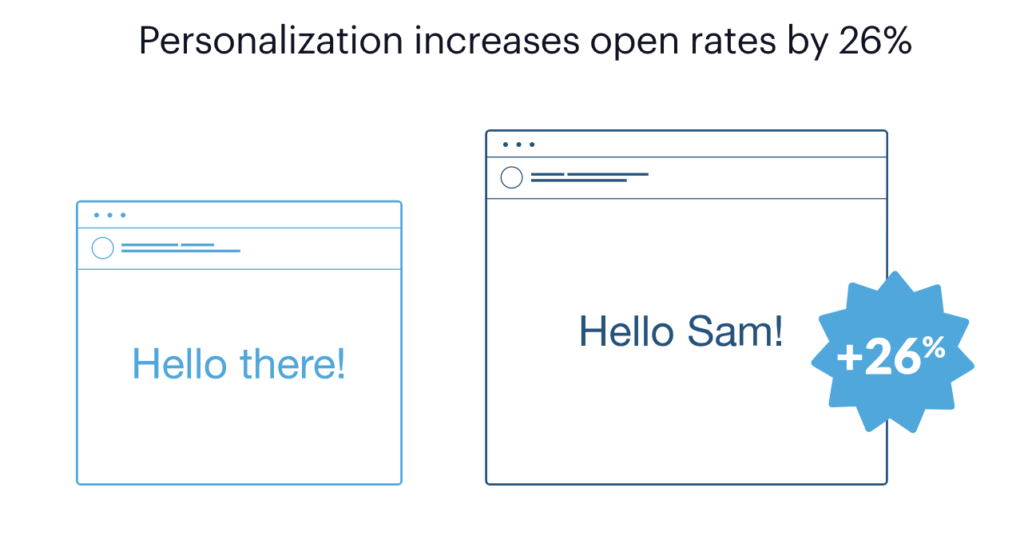
4. Interactive donor surveys
Nonprofits can use interactive surveys to understand donor touchpoints and preferences. These surveys help build stronger relationships and improve engagement strategies. According to Nonprofit Quarterly, text surveys can have response rates of up to 50%. They also help nonprofits understand donor motivations, gather feedback and learn what works in their nonprofit marketing.
Use surveys to gather information:
Understand donor motivations through surveys. They show why donors support your cause, the issues they care about, their interests and help craft messages that match their values.
Survey results help nonprofits tailor their communication and engagement efforts.
| CallHub’s outbound text surveys allow nonprofits to send personalized questions proactively. Send an initial text to all donors on your list. Based on their responses, the agent can share follow-up questions. Agents can also use saved replies to answer common queries while messaging donors. |
Re-engage lapsed donors
Surveys can help nonprofits reconnect with donors that have stopped engaging with the nonprofit. You can ask meaningful questions that help you understand donor churn and find potential ways to bring these donors back into your fold.
Read Also: How Do You Retain Lapsed Donors and Get them to Donate Again?
5. Leverage storytelling for donor engagement
A study by StoryRaise found that over 70% of donors are more likely to donate when nonprofits use storytelling effectively.
Share compelling impact stories
Telling impact stories helps donors connect emotionally with the cause, which increases their commitment. According to a study by The Nonprofit Marketing Guide, emotionally engaged donors are 75% more likely to continue giving and 2.5 times more likely to increase their donation amounts over time. This improves donor retention strategy.
Use visuals and testimonials
Incorporating images, videos, and testimonials makes stories more engaging and relatable.
- Visuals: Pictures and videos capture attention and deepen the emotional impact.
- Testimonials from donors and beneficiaries build trust. They show real-world impact, encouraging more donations.
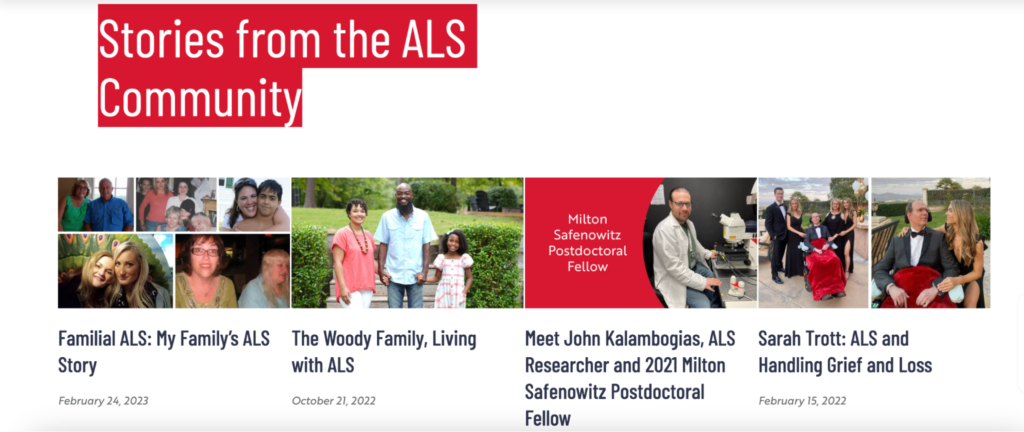
| Ice bucket challenge by ALS |
| The ALS Association is dedicated to raising awareness and helping in research for amyotrophic lateral sclerosis (ALS), commonly known as Lou Gehrig’s disease. They asked people suffering from ALS to share its impact on their lives and those around them. This initiative of posting personal stories resonated deeply with the public. One of the stories is about Cory Mosley, Michel, and Sunny Brous who are suffering from ALS, and how it impacted their families. This emotional connection led to $220 million of dollars in donations. This shows how storytelling can impact a nonprofit. |
6. Offer volunteer opportunities
Involve donors in hands-on activities
Encouraging donors to volunteer lets them see the direct impact of their contributions. This strengthens their emotional bond to the cause. Volunteering allows donors to engage beyond financial donations, whether volunteering at an event, working on a project, or supporting beneficiaries.
How does this impact donor engagement:
- Stronger connection: Donors who volunteer feel a personal connection to the organization’s work. This leads to more significant investment in its mission.
- Increased retention: Volunteers who are engaged are more likely to stay loyal to the cause. This leads to better donor retention.
- Peer advocacy: Volunteers share their experiences with their networks. This helps bring in new supporters and increases engagement.
7. Create a donor engagement plan template
Here’s the donor engagement plan template checklist, which nonprofits can use to keep their engagement on track.
| Checklist | Frequency/Timing | Action Items |
| ✅ Regular updates & check-ins | Monthly/Quarterly | – Schedule updates via email and phone.- Keep donors informed about progress, events, and needs.- Segment lists for personalized outreach. |
| ✅ Newsletters | Monthly/Quarterly | -Highlight achievements, upcoming events, and needs.- Feature donor spotlights. |
| ✅ Social media | Regular | – Post updates on Facebook, X (Twitter), and Instagram.- Celebrate milestones and promote events. |
| ✅ Important dates & targeted campaigns | As applicable | – Track important dates (e.g., Giving Tuesday, donor anniversaries).- Create campaigns around these dates. |
| ✅ Campaign timeline | Specific to each campaign | – Set initial outreach, mid-campaign updates, and final impact reports.- Define deadlines for outreach. |
| ✅ Donation acknowledgment | Upon donation | – Acknowledge donations with personalized thank-you messages.- Include details on impact and future goals. |
The addition of a donor engagement plan template emphasizes the need to structure your strategy for consistent donor engagement.
Implement these strategies to strengthen donor engagement
As Melinda Gates wisely said,
“Philanthropy is not about money. It’s about using whatever resources you have at your fingertips and applying them to improve the world.”
This quote highlights the essence of donor engagement — it’s not just about financial contributions but about fostering a deep connection between your supporters and your cause after collecting the funds from your donors. Nonprofits can build lasting relationships far beyond a one-time donation by leveraging resources such as personalized communication, compelling storytelling, and volunteer opportunities.Now that you know some impactful strategies for donor engagement, check out how texting can help in donor engagement and some templates that can help you set up your campaigns much faster. Don’t miss out on some valuable tips in white reading!!

